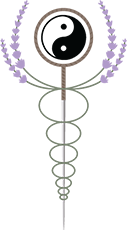Jing Fang Bai Du San is a modification of the commonly used pediatric formula Ren Shen Bai Du San.
The original formula was first documented in the medical text Craft of Medicines and Patterns for Children, published in 1119 and is used to treat the diagnosis of Wind-Cold-Damp with an underlying deficiency.
From a TCM perspective, Wind suggests that there is a viral infection and Cold-Damp describes the mechanism of action that the virus has in the body. Cold manifests as chills, constriction, sharp pain, lack of sweating, and weak digestion. Damp manifests as heaviness, thick discharges (from sinuses and/or lungs), and dull achy pain.

At the initial onset this is occurring at the exterior of the body (as opposed to having internal organ involvement). The main indications for use is a high fever with strong chills/shivering, no sweating, pain and stiffness of the head, neck/shoulders, and limbs, a full feeling in the chest that may also feel like bloating, nasal congestion, coarse sounding breathing, and a productive cough.
Since kids are naturally deficient Ren Shen (Ginseng) is included in the original formula to help boost them up while dispelling the pathogen.
The modification Jing Fang Bai Du San was first published in the medical text Multitude of Marvelous Formulas for Sustaining Life in 1550. It is designed with adults in mind and as such the tonic herb Ren Shen has been removed and a stronger focus on dispelling the pathogen is employed. It is used when there is a more severe presentation of symptoms than what the original formula was designed for.
The formula consists of:
- Jing Jie – releases exterior and dispels Wind; use for common cold/flu, fever, sore throat, headache
- Fang Feng – releases exterior and dispels Wind, expels Cold and Damp, relieves pain; use for common cold/flu, headache, body ache, and stiff neck
- Qiang Huo – releases exterior and disperses Cold and Damp; use for common cold/flu, headache, fever with chills, body aches and pain
- Du Huo – dispels Wind and Dampness, alleviates pain, and releases the exterior; use for common cold/flu, muscle ache, headache, fever
- Chuan Xiong – moves Qi and Blood, alleviates pain, dispels Wind; use for headache and body pain
- Chai Hu – harmonizes the exterior and interior, releases the surface; use for alternating chills and fever, body pain, stifling sensation in the chest
- Qian Hu – directs Qi downward and dispels phlegm; use for cough or wheezing with thick phlegm
- Jie Geng – opens the lungs, transforms phlegm, benefits the throat, and guides the other herbs in the formula to the lung and airways; use for cough or wheezing with profuse phlegm, throat pain
- Zhi Ke – promotes the flow of Qi in the lungs; use for cough and distension in the chest
- Fu Ling – transforms phlegm and benefits water metabolism; use for cough with phlegm
- Bo He – releases exterior, clears the head, benefits the throat; use for fever, cough, headache, sore throat
- Gan Cao – nourishes the lungs and stops cough, harmonizes herbs in formula; use for cough and wheezing, shortness of breath
This is a formula that is recommended to have on hand during flu season as it is often difficult to leave the house to get help once symptoms start, especially right now.
It is in stock at Lavender House in two portion sizes. Three doses for $10 or six doses for $17.50. The format is raw dried herbs that have been vacuum-sealed so it will remain fresh until you need it. Raw herbs are the best choice when dealing with acute conditions you want to release before the condition takes hold, as they are more potent than patent formulas dispensed as granules or pills.
How to Prepare Your Formula
Equipment required: Pot with a tight-fitting lid, measuring cup, strainer
1. Separate the white envelope from the loose herbs and set aside
2. Add loose herbs to the pot and cover with water. The water should be about 0.5-1 inches above the herbs.
3. Put on the lid and bring the decoction to a boil. Once boiling reduce heat to a low simmer. Try not to peak at the herbs too often while cooking them. Taking the lid off can cause essential oils to escape.
4. Simmer for 15 minutes, then add the herbs in the white package, and simmer for an additional 5 minutes. You can add more water if necessary.
5. Remove from heat and strain.
6. Divide the remaining liquid into three doses to be taken morning, noon, and before bed.
References: Chinese Herbal Medicine Formulas and Strategies. Pages 47-50. Bensky et al, 2nd edition

